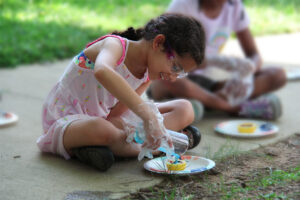Why STEM is important
STEM training reaps many benefits,
including advanced critical thinking and problem-solving skills,
 Many of the parents whose children are either entering or continuing their time at SaSS are in the Gen X, “elder millennial”, or millennial age ranges. These generations are unique in that we (I include myself in the “elder millennial category”) grew up with the advent and advance of technology the likes of which has never been seen in human history in both scale and scope. It’s hard to wrap our minds around this, but our children’s future careers likely don’t even exist yet. That’s why it’s vital that we as parents are preparing our children in the skills that will have a staggering impact on their futures. I am, of course, talking about STEM (Science, Technology, Engineering, and Mathematics).
Many of the parents whose children are either entering or continuing their time at SaSS are in the Gen X, “elder millennial”, or millennial age ranges. These generations are unique in that we (I include myself in the “elder millennial category”) grew up with the advent and advance of technology the likes of which has never been seen in human history in both scale and scope. It’s hard to wrap our minds around this, but our children’s future careers likely don’t even exist yet. That’s why it’s vital that we as parents are preparing our children in the skills that will have a staggering impact on their futures. I am, of course, talking about STEM (Science, Technology, Engineering, and Mathematics).
STEM training reaps many benefits, including advanced critical thinking and problem solving skills, learning through trial and error, exposure to the scientific method, and being hands-on for those learners who thrive when they get their hands dirty. When STEM training is in the context of playful learning that is both developmentally-informed and age-appropriate, children thrive and advance rapidly. Research on early childhood education consistently indicates that high quality early STEM experiences lead to positive future outcomes.
This is particularly important for teenage and younger girls, where stereotypes that women don’t fit into these academic areas still abound. It’s vital that they have access to thorough STEM education and encouragement to pursue these areas for their future careers. Far from the image of the stereotypical “nerd” seen in shows like The Big Bang Theory, those who pursue pathways in STEM are our future leaders and problem-solvers, and fostering the mentality that STEM is not only cool but accessible for everyone is key to our collective children’s success.
Unfortunately, a traditional academic setting is limited in its ability to provide either rigorous or challenging STEM curriculum due to a variety of constraints, such as school curriculum and assessment goals and underprepared staff. So, what does work? Firstly, parental intervention is key. By intervention, we mean the use of apps at home, STEM-focused screen time, STEM-based activities like participating in a community garden, and more. By starting at home you’re giving your child a leg up on STEM skills. Second, you can build those connections with activities like visiting museums, libraries, and community organizations that are focused in these areas. Go to the fire station and discuss the technology they use; visit the local park service and discuss environmental resources. These are all STEM!
Finally, bridge the gap between school years; this is where putting STEM to work for us during the summer is so valuable. At SaSS, workshops focusing on science, technology, engineering, and mathematics help bridge the skill set between school years. Your child may be interested in the Flight Science workshop, where model rockets are built and airplanes, parachutes, and even flying saucers are examined. Perhaps they want to dive into coding and computer programming. Robotics? Check. We even have a STEAM workshop, which ties in another vital part of growth for children- the arts. Pursuing science, technology, engineering, mathematics, and yes, the arts at Summer at Sandy Springs is not only fun for your kids but in their best interests. Aren’t you clever for choosing SaSS? See your future world-changers this summer!





